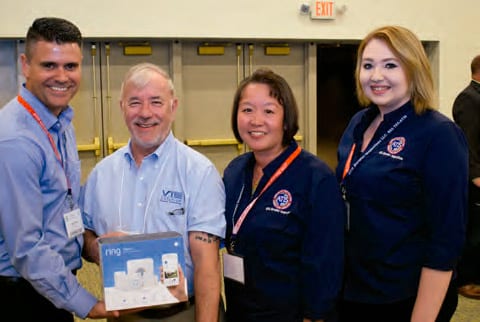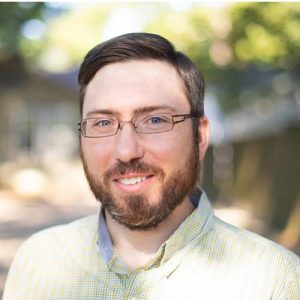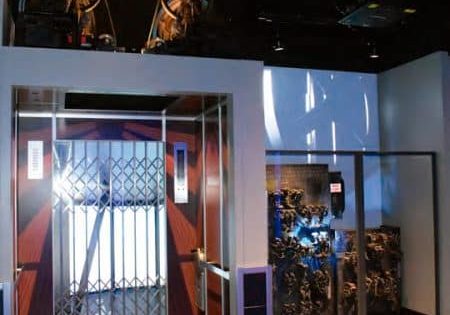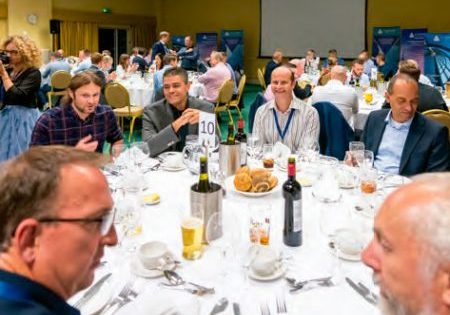Lake Geneva hosts another busy two days for 265 inspectors and mechanics from all over the U.S. and Canada.
The Grand Geneva Resort & Spa in Lake Geneva, Wisconsin, played host to the Wisconsin Elevator Symposium again this year, on September 26-27. Hosted by NAESA International, this 14th annual event (the eighth hosted by NAESA) offered a total of 1.2 Continuing Education Units (CEUs) by NAESA, the Qualified Elevator Inspector Training Fund and the State of Wisconsin. It was also approved by the National Association of Elevator Contractors for 11 hr of Certified Elevator Technician (CET®) and 1 hr safety credit. Minnesota, Washington and Virginia also offered CEUs,
albeit fewer.
Day One
NAESA Education Director Jack Day began the first day by explaining how important quality education is to the industry. By a show of hands, about half of the 265 (40 more than last year) in attendance were inspectors, with the other half being mechanics. He thanked NAESA Assistant Executive Director and Certification Program Administrator Emerald McGehee and Education Program Administrator Megan Fitzmaurice for their hard work in organizing the event and the sponsors for also making it possible.
Dawn Crim, head of the State of Wisconsin Department of Safety and Professional Services, read a welcome letter from the governor and explained her department issues more than one million licenses related to its conveyance code. She asked attendees to bring a young family member to work to spark their interest in the trade and, eventually, help fill the widespread need for inspectors and mechanics.
Day then presented on ASME A17.1 Section 8.7: Alterations. His explanations of how to know when to get a permit and determine whether a job is a replacement/maintenance/repair or alteration were helpful to all in attendance, as these issues are ubiquitous. He explained each type of job in detail with examples throughout. Acceptance and other testing methods were also covered, and the importance of using accurate and appropriate code data plates was stressed. The audience was also very interested to hear that all National Fire Protection Association (NFPA) books are available for free on nfpa.org.
NAESA Executive Director Bob Shepherd then took the podium “to clear up some misinformation” relating to the association. First, he said the preceding day’s golf outing (a first for NAESA and in memory of Ken Garst) was a successful fundraiser for the Elevator Escalator Safety Foundation (EESF), with all proceeds going to it. He had also told EESF Executive Director Shelly Johnson there was no need to send a Foundation representative so that all the money from the golf outing and silent auction could go directly to educating children on the safe riding of industry equipment. He then gave an update on the residential elevator safety issue (p. 86) and encouraged members to call the U.S. Consumer Product Safety Commission and encourage it to move on finding where as many of the 300,000-plus residential elevators in the country are so a fix can be implemented. Finally, he said an anonymous email regarding unethical test implementation by NAESA in Illinois was entirely fictitious.
The next presenters, Ed Sabo, Kim Schmitt and Brian Rausch, all of the State of Wisconsin, gave updates on the state’s industry. A detailed checklist of what inspectors are to look for was displayed, and the upcoming Electronic Safety and Licensing Application (ESLA) was detailed. Already implemented for other state licensing, ESLA is an app that promises to greatly speed up the approval process when rolled out for the elevator industry in January 2020. Schmitt explained the state is cracking down on mechanics, owners, contractors and management companies that ignore orders, abuse temporary permits, don’t schedule annual testing, etc. Rausch revealed the state is seeing few new hydraulic installations, with them invariably replaced by machine-room-less (MRL) elevators. He added that the fact NFPA-13 is not requiring sprinklers if proper suspension means are used in hoistways is probably not being taken advantage of as much as it should be. This sparked lively conversation as to how sprinkler regulations in other jurisdictions are mandated and/or enforced.
Mark Yako of GAL Manufacturing Corp. then spoke on maintenance, inspection and testing of the Hollister-Whitney Rope Gripper®. This included a history of how unintended car movement has been addressed in the code, how the Rope Gripper works, its components and installation procedures, and how to inspect and maintain it.
Joe McAnulty of Liberty Elevator Experts and chair of the NAESA Safety Committee presented on elevator testing. Hazardous noise protection, personal protective equipment (PPE) and what to wear and do when around different types of equipment, inspection intervals and procedures were covered.
Elections (see sidebar) were held after the first day’s presentations, and an evening reception with a silent auction for EESF followed. This was the best opportunity to visit all the booths and meet other attendees. Several tables with various heavy hors d’oeuvres and two open bars were set up.
Day Two
“You’re the best group I’ve ever had,” said Day to begin September 27, the shorter day of presentations, as he praised attendees’ attentiveness and engagement. He then introduced Lawrence Taylor, a QEI, Schindler’s codes and standards officer and former chief inspector for Texas (its longest-serving chief ). In “An Introduction to Witnessing the Acceptance Testing of Schindler MRLs,” he covered the Schindler 3300 and 5500. Very interested, the audience asked many questions of the charming Taylor, who, with other present Schindler experts and testing experts in the audience, covered the many peculiarities of the popular elevator models. Everyone (even Taylor) left with a better understanding of the models, and Day remarked, “We’d like to convince the other companies to bring similar presentations.”
Barry Blackaby, retired Otis director of worldwide electrical codes, then spoke on job hazard assessments ( JHAs) as outlined in The Elevator Industry Field Employees’ Safety Handbook Section 18. As employee and safety training is based upon JHAs, he explained, even a one-person company needs to use JHA material. “It’s usually not stupid acts, but a lack of thought in a particular time” that causes accidents, he added. Always wearing the proper PPE, thinking before acting and instilling self-responsibility in all elevator personnel are critical in preventing accidents, he concluded.
In “Braking System and Traction Limits,” the last speaker, Richard Hollowell of Otis, gave a background on the mathematics behind the use of ropes and their design for traction in acceleration/deceleration, braking and torque put into perspective with applicable codes.
Elections by Board of Directors
NAESA International’s board of directors unanimously elected Christopher Shade NAESA president at a meeting held shortly after the symposium. NAESA said Shade has “a long and notable work history as a State of Ohio elevator inspector and inspector supervisor,” adding that he “has a vast knowledge of codes and a complete understanding of elevator and escalator systems and more.” Joining him on the Executive Committee, members of which are elected every year, are: Vice President Chris Dodds of Delaware; Secretary Stephanie Coyne of Ontario, Canada; and Treasurer Greg DeCola of New York.
Shade was also elected to another three-year term on the board. Other board electees are Paul Zweig of Maryland (one year), Areslio “Omar” Magana of Minnesota (three years) and Levi Shaw of California (three years). Those elected to the Board of Certification are: Joe McAnulty of Delaware (three years) and Justin Flumer of Maryland (one year), with Dean McLellan of Ontario elected as chair and Coyne elected as vice chair.
As a boy, Shade hoped to be an auto mechanic. While he became proficient in this trade, his career path took a turn to amusement rides and then elevator inspecting. NAESA added:
“[Shade] enjoys life, family and people very much. Besides being the president of NAESA, [he] is also a member of the NAESA Board of Directors and Board of Certification, where he is the Test Development Task Force chair. He is the person pretty much responsible for assembling the new NAESA QEI exam on an annual basis, working with our psychometric group and our NAESA subject-matter expert item writers from all corners of North America. Let’s all welcome [Shade] as he takes over the presidency of NAESA and champions the integrity of the QEI inspector and the NAESA QEI program.”
Get more of Elevator World. Sign up for our free e-newsletter.








